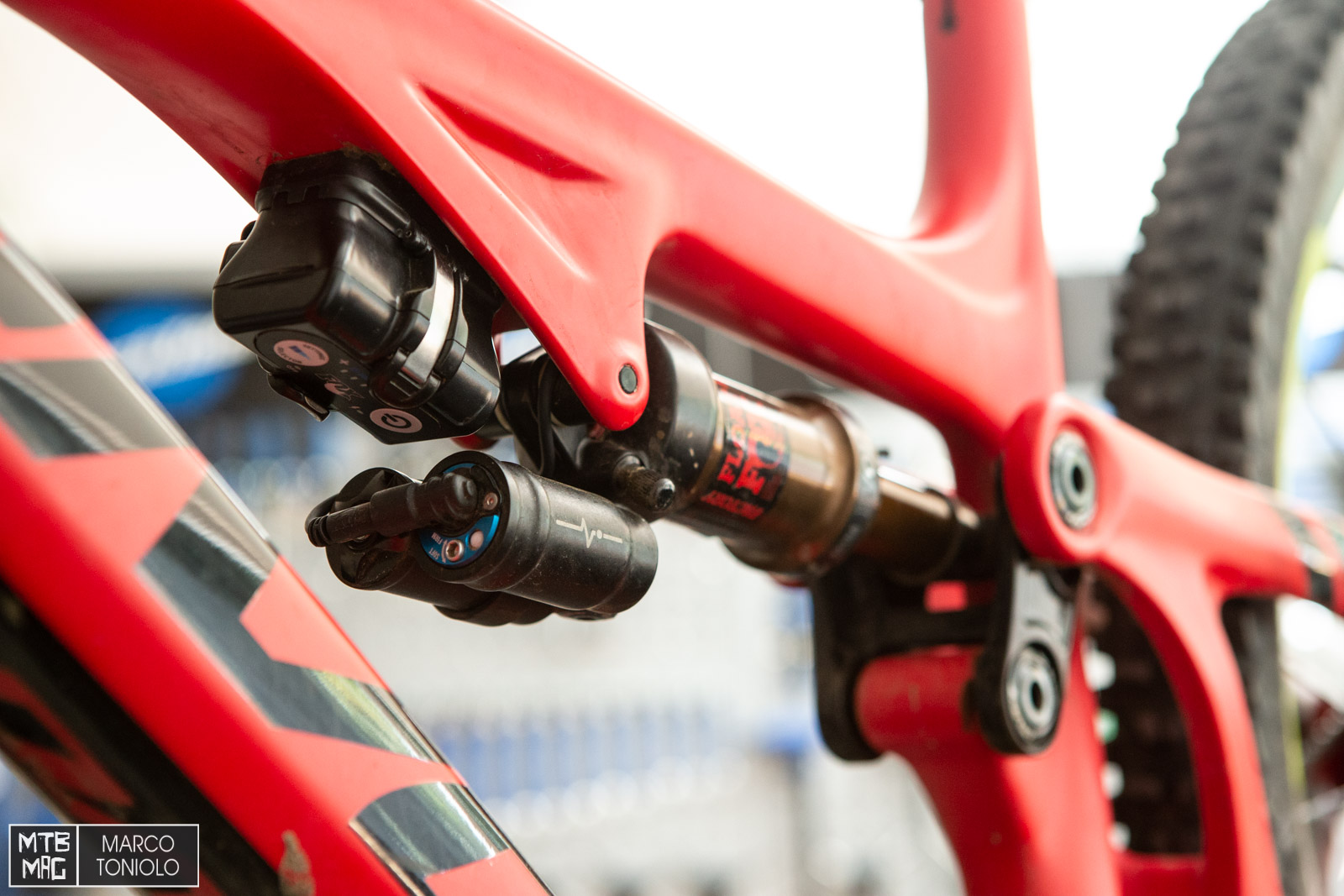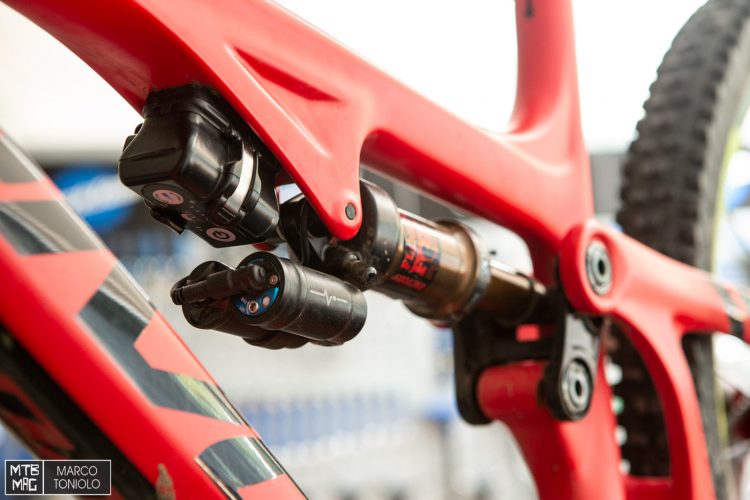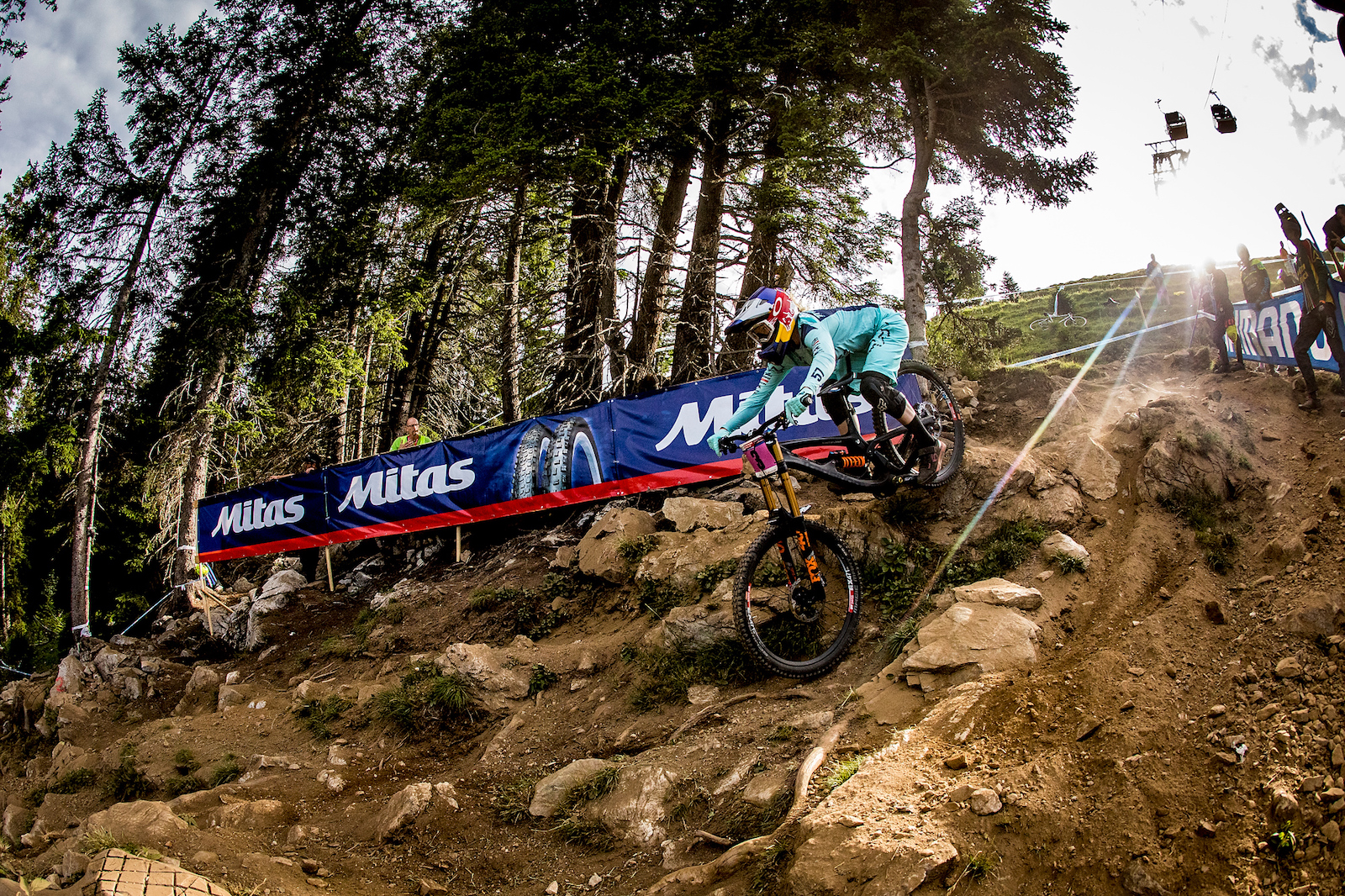After many, months of speculation, today FOX is finally unveiling their electronically controlled suspension platform, dubbed Live Valve. At the end of the official event held in early June in North Carolina, FOX was kind enough to send us back home from the press camp with a Pivot Mach 5.5 mounted with the new products. This means we’ve had plenty of time to form thoughts, after almost three months of testing.
On first glance, Live Valve doesn’t appear to be anything flashy. Live Valve manages both the fork and the rear shock through a central control unit, powered by a single rechargeable battery, attached to the front triangle – in the Pivot’s case, under the top tube. Before going too deep into the details, let’s see why FOX has chosen to develop electronic suspension in the first place.
In 2004 FOX had already worked on a system designed to automate the fork, the Terralogic. It was a hydraulic system that “opened” only when bumps were of a certain intensity. Later they introduced the iCD and then the iRD, a remote control that opens the suspension through an electrical impulse. But looking at how many times the athletes opened and closed the hydraulics during a 90 minute XC race, it was clear that it wasn’t actuating enough. To shed light on the numbers: the iCD actuated 40 times, which rose to 90 with the iRD. Nino Schurter, on the Lenzerheide track, opened and closed his Twin Lock 160 times .
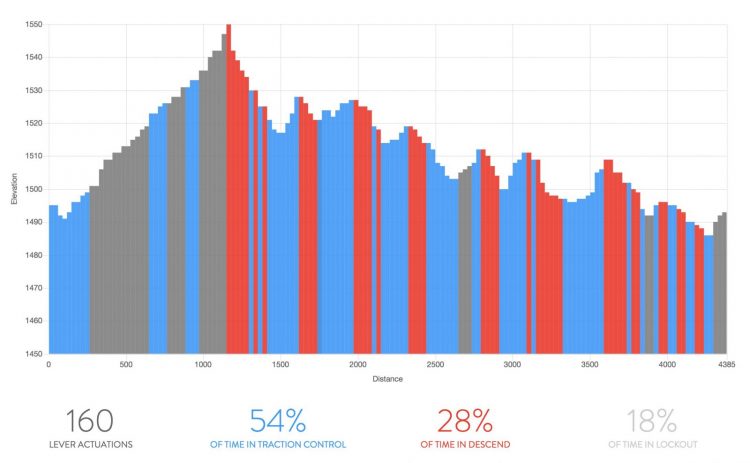
On the same track, Live Valve operated 480 times per hour. Now let’s see how this is possible…It’s worth noting that this technology was first developed on ATVs, which we had the pleasure of testing out during an afternoon full of drifting and skidding around on a closed track (here I am driving). Generally speaking Live Valve was largely intended for automotive applications – for example, pick up truck lovers, take note: the new Ford F150 Raptor has Live Valve.
The Components of Live Valve
Controller – attached to the frame (on the Pivot is located under the top tube). This is equipped with a three-axis accelerometer. Two wires start from the controller, one going to the shock and one to the fork. Bluetooth is too slow (in the order of 10-20 milliseconds), and for this reason physical cables have been chosen instead. In fact, the transmission speed is only 3 milliseconds – 100X faster than the blink of an eye.
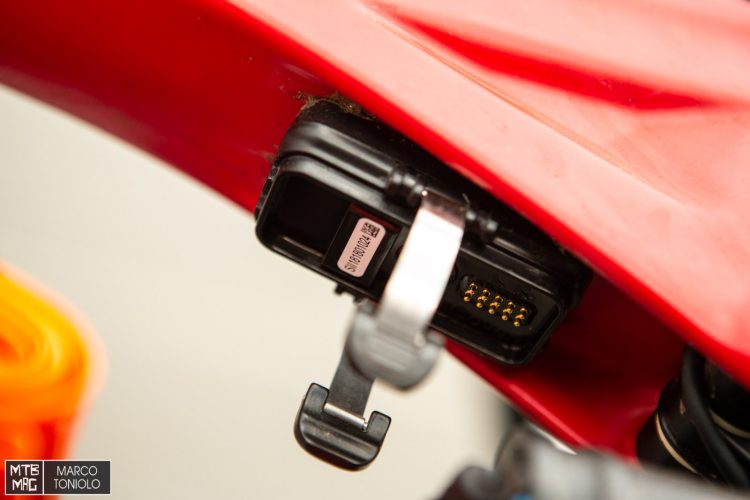
Battery – detachable and mounted to the controller, it is easily recharged with mini USB cable. The charging time is about two hours, and the duration of in the field use ranges from 16 to 20 hours, depending on the settings and terrain: if you continue to get impulses off-road, it will run out faster than when you are grinding along on a paved climb. However, it takes only 15 minutes to recharge enough juice for around 2 hours of ride time. After 90 minutes without impulses, the system switches off automatically and must be switched on manually. If the battery completely dies while you are riding, Live Valve opens the hydraulics and goes off.
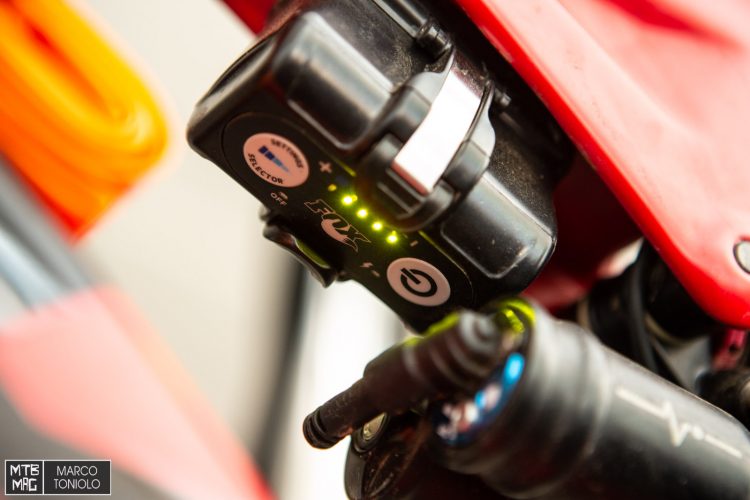
Cartridge – located next to the piggy back on the shock or above the sealed damper cartridge in the case of the fork. They are identical and contain an activator (solenoid) that opens and closes the hydraulics.
Two sensors – one attached to the fork’s arch, the other at the rear swingarm, close to the axle. These are also wired in connection with the control unit.
Outside of the Live Valve parts, the fork and rear shock structures are relatively stock, so to speak. Beyond the cartridges described above, this is the same 2019 FOX 36 Factory Kashima that we’ve tested before, paired with a standard Float X. However, the fork loses, the independent high and low speed compression adjustments: there is only one compression adjustment, tunable via a 3mm allen key with 18 clicks, as well as your standard Rebound adjustment. There is also no external knob on the rear shock, except for Rebound.
The weight of the whole system is about 150 grams heavier than Scott’s Twin Lock.
How does it work?
First off, Live Valve must be calibrated. The procedure is automatic, just press a sequence of buttons, and in 30 seconds you are ready to go. This is only necessary before your first ride, that is – when you buy a new bike or mount the system on a different bike. Otherwise, just turn on Live Valve, choose one of the five levels (or leave the one you had previously chosen, that is saved even if you’ve removed the battery to recharge it) and start pedaling. We’ll come back to discuss the 5 “levels” shortly.
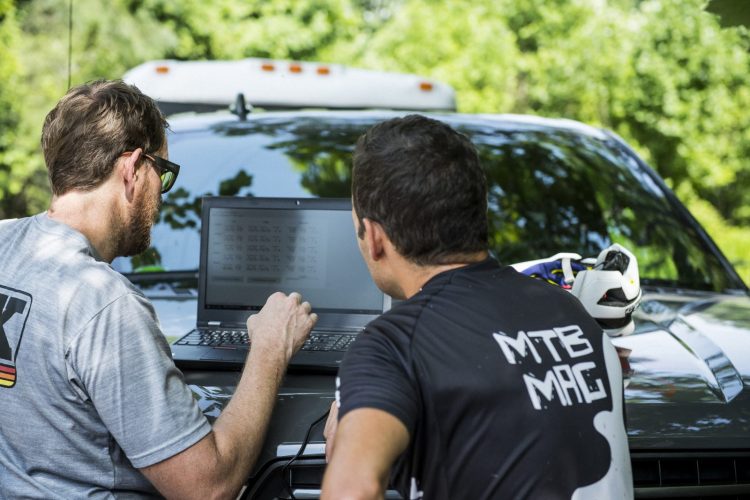
Through the controller and sensors, Live Valve knows whether you are on an uphill or a downhill slope. An algorithm analyzes data 1000 times per second and decides whether to open or close the hydraulics. This in fact makes the Live Valve open or close the suspension depending on the terrain, with the aim of improving pedaling efficiency by dispersing as little energy as possible. In practice there are two positions for both fork and shock: open and closed, where “closed” means a level of lock out that is decided by the manufacturer of the frame.
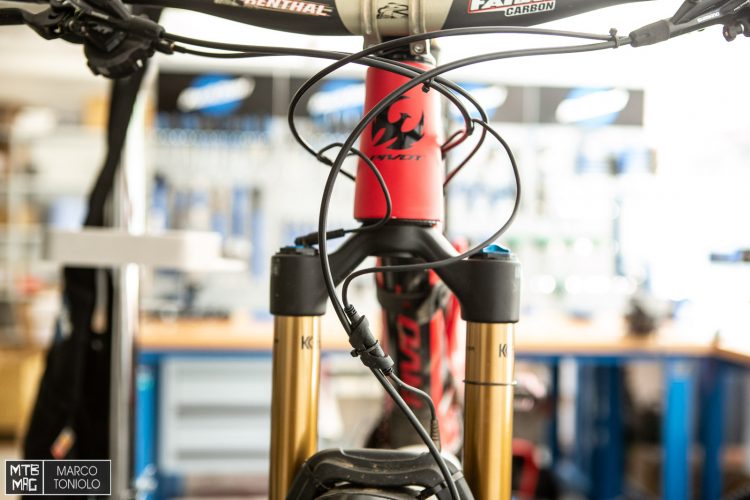
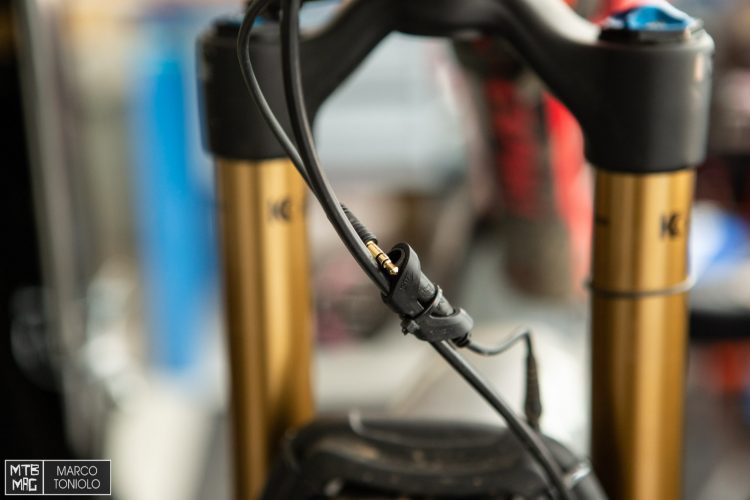
Depending on the pitch of the terrain, the reaction times change: fast uphill, medium speed when level, and more slowly when pointed downhill. This is because you do not need the same degree of pedaling efficiency on the downhills where traction and compliance is paramount. The algorithm is therefore the heart of Live Valve, while the parameters on which it operates are those that decide the 5 settings mentioned above. From level 1 to 5, the difference lies in the reactions depending on the terrain: taking the two extremes, 1 will open the hydraulics faster uphill or level, while the 5 will require a fast, harsh event to open up. For a trail bike like the Mach 5, I found that the two best settings are 1 and 2. If you ride a bike for XC/racing, that would likely be a different story. The parameters can not be altered by the final customer.
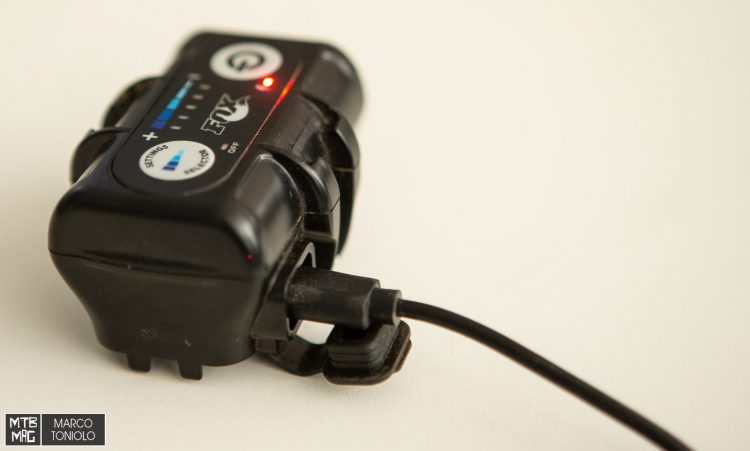
In order to keep the battery consumption low, the activator (solenoid) of the valve only needs a pulse to move the switch. While the suspension is either open or closed, there is no energy consumption.
On the trail
In addition to the three days spent on trails in the Pisgah Forest, I used the Mach 5.5 from June through today on my home trails. As soon as I got back, I changed the wheels and tires, because I was not all that thrilled with the 35mm internal diameter rim and 2.8″ tire combo. Even the saddle, handlebar and stem gave way to some components with which I feel more comfortable.

I’ll immediately start off by saying that, despite the Live Valve appearing complicated upon first glance, it is actually an instrument that simplifies the riding experience: you turn it on and forget about it for the entire duration of the ride. Like all products of this kind (see my review when the 1×11 drivetrain came out), I welcomed it, because there is one thing less to think about, to be more precise, two: locking and opening the fork and shock depending on the terrain.
As previously mentioned, my favorite settings for this type of bike, a trail bike, were 1, and 2. This is because the suspension opens at the slightest bumps with the ground, which improved traction uphill, but also helped avoid dispersing energy when mashing on the pedals on easy surfaces. Yeah, this is where Live Valve makes the difference, uphill: without electronic control I would have left the suspension closed, or in trail mode, but with LV, I have the opportunity to take advantage of all the sensitivity of an open suspension when I need it, which is particularly key on technical trails.
Of course, the Pivot’s DW-Link is a system that already works well when left open, so the benefits of Live Valve will be less noticeable than on a Horst Link, where bobbing is usually more noticeable when the hydraulics are open. A brand that immediately jumped on board was Scott, who not only has a Horst link on their latest bikes, but uses the Twin Lock remote control to open and close their suspension – a system that is the exact opposite of Live Valve because it obliges the rider to think more while in the saddle, as well as to create a bit of a mess on the handlebars. In fact, among the bikes given to the media there were a couple of Scott Geniuses.
But let’s get back to the test. One of the things that most affects Live Valve is its speed. The 3 milliseconds necessary to transfer the impulse of the control unit to the activator mean that if you are pedaling on a flat, smooth section and you encounter an obstacle like a root, the fork opens before the impact is transferred to the bike. An incredibly impressive execution speed, made even more efficient by the three accelerometers positioned on the frame, because they also even understand when you are landing from a jump. For example: you’re riding on a smooth path, with a drop. When the bike begins to go down, the LV understands that it is jumping and opens the hydraulics before the impact on the ground as it detects “free fall”. Does anyone remember our Ei Shock test? It seems like centuries ago that we rode the system, but basically, it did not recognize jumps and landed with the suspension closed.
When you pedal, you can hear light “clicks”, caused by activators that open and close. It is hardly worth mentioning – certainly an afterthought on the trail, and all the while, Live Valve works without having to move a finger. If you ride bikes for the sole sake of having fun, not having to worry about your suspension is definitely an added convenience and a way to not forget that your suspension is closed before a descent, which brings about an element of safety as well. But where it comes under scrutiny is among the antagonists, because it should allow you to be faster. Something that I wanted to test in person…
Does Live Valve make you faster?
I chose a stretch of a rather technical trail with continuous ups and downs, 1.42 km long and I rode it once with the Live Valve on and once off, being careful to always choose the same lines and push hard throughout the duration of the test. This process was repeated over several days. The times with LV on was an average of 4:33 minutes and 4:41 when it was off. A difference of 8 seconds, practically 2 seconds for every minute. Since this is an average, external factors such as fatigue and riding errors are rendered insignificant.
We must now consider first the kinematics of the Pivot Mach 5.5: as I said above, it is a very efficient system in pedaling, even if you leave the suspension open. Probably with a Specialized, a Scott, a Canyon, or any other brands that use a Horst link, the time difference would have been even greater.
Second thing: 2 seconds per minute makes 180 seconds, or 3 minutes, in an XC race that lasts an average of 90 minutes, which is an eternity. But all the athletes have remote controls to handle the suspension, and we know they use them dozens of times in every race. Keeping in mind that a Schurter opens and closes 160 times on a track like that of Lenzerheide, while the Live Valve reaches 480 times, there is still room to improve times, even though we are certainly not talking about 3 minutes per race, especially at that level of competition.
This is to say that the riders who stand to gain the most from Live Valve will be those competing in a time trial, a cross country or an enduro, but even downhillers may be on board when the track involves lots of sprints. For good reason, Aaron Gwin asked FOX for a lock out for the X2 during the World Cup race in Croatia, where the final was flat and cutting through the streets of the village where the race was held.
Conclusions
The FOX Live Valve simplifies riding: you turn it on, start pedaling, and you forget you have it. The suspension is open or closed at the right time(s), thus improving pedaling efficiency on the uphills and on the flats. The system has always worked without problems during these months of testing, and does so with incredible speed and efficiency. In practice, I could not find a situation where I could put it in any sort of crisis. It is most certainly a product of great interest, especially in the competitive field, where there is a clear advantage in terms of overall times on most tracks.
Availability
The Live Valve will be available on FOX 32, 34 and 36 forks, as well as on the Float X shock absorber, whose piggyback orientation can be moved according to the frame. It is also slated to be adapted for the X2 in the near future.
For now the brands that have adopted it are Giant, Scott and Pivot. Rocky Mountain has compatible frames, but it does not yet have it in their range.
Live Valve can also be purchased as an aftermarket upgrade. The package includes fork, shock, controller, battery and cables.
Pricing
32sc: $3000 US
34: $3000 US
34sc: $3125 US
36: $3250 US
The complete bikes will have an added charge of around 1800-2000 euros to upgrade to Live Valve.

